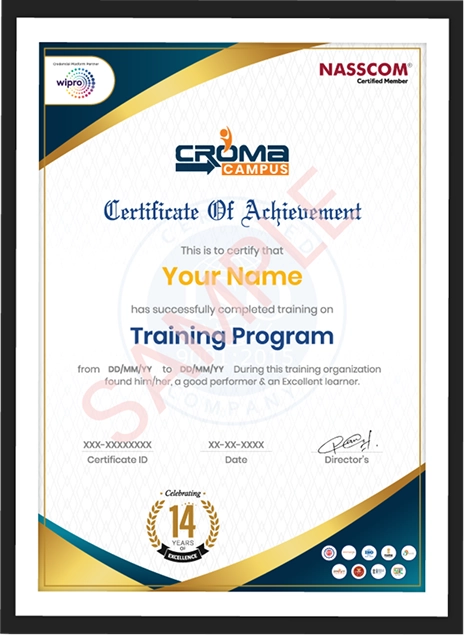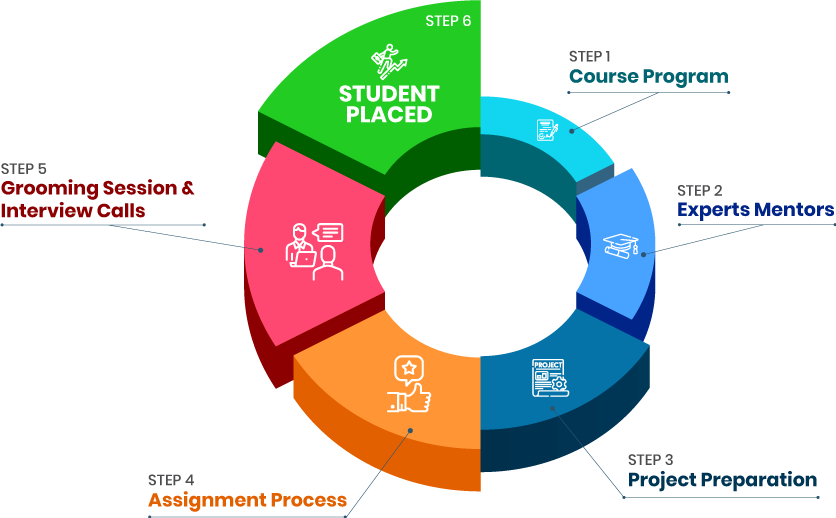Course Design By
Nasscom & Wipro
Right at the beginning of the Data Analytics Online Course in Bahrain, you will receive sessions concerning its fundamentals & basics.
Receive sessions concerning Statistical Analysis.
In-depth information about Data Analytics.
Full-fledged training in Excel- Basic to Advance (in this specific section, there are numerous sub-sections, and trainers will help you to understand each one with proper instances).
Receive training in Tableau, SQL, Power BI, & Python basics respectively.
A fresher Data Analyst earns around Rs. 3,56,363 yearly, which is quite an interesting amount.
On the other hand, an experienced Data Analyst earns around Rs. 11.5 Lakhs yearly.
By turning into a freelancer, you will also make an additional amount.
By imbibing the latest skills, and trends, you will eventually get uplifted.
By acquiring a legit Data Analytics Online Course in Bahrain, you will turn into a skilled Data Analyst or Data Scientist.
You will receive quite an impressive salary package.
Your core knowledge will get strengthened.
You will always have numerous job roles in hand.
Immense job opportunities are on the rise.
Increasing salary structure of skilled Data Analyst.
Work possibilities in a wide range of industries.
Uplift the decision-making process.
Huge scope for freelancing.
You will have to interpret data and examine results utilizing statistical techniques, and provide ongoing reports progressively.
You will also have to build and imply databases, data collection systems, data analytics and other strategies that optimize statistical efficiency and quality.
You will have to obtain data from primary or secondary data sources and maintain databases/data systems.
You will also have to identify, examine, and interpret trends or patterns in complex data sets.
You will also have to work hand in hand with management to customize business and information needs.
Our experienced trainers will also assist you in clearing the interview by often organizing a mock test.
The main agenda of the Data Analytics Online Certification in Bahrain is to assist you to get placed in a well-established organization.
Various top companies hire people as per their skills and knowledge, experience, etc.
Here, along with a legit certification in hand, you will also get enough chances to brush up your existing skills, and imbibe new ones regarding Data Analytics Online Certification in Bahrain respectively.
Here, you will accumulate information concerning its related course as well.
Croma Campus will offer you placement assistance.
Well, right from the initial level, our trainers will give you suggestive tips to clear the interview process.
we train you to get hired.

By registering here, I agree to Croma Campus Terms & Conditions and Privacy Policy
+ More Lessons
Course Design By

Nasscom & Wipro
Course Offered By

Croma Campus

Stories
success
inspiration


career upgrad


career upgrad


career upgrad


career upgrad
12-Jul-2025*
14-Jul-2025*
16-Jul-2025*
12-Jul-2025*
14-Jul-2025*
16-Jul-2025*

You will get certificate after
completion of program

You will get certificate after
completion of program

You will get certificate after
completion of program
in Collaboration with






Empowering Learning Through Real Experiences and Innovation

we train you to get hired.

Phone (For Voice Call):
+91-971 152 6942WhatsApp (For Call & Chat):
+91-971 152 6942Get a peek through the entire curriculum designed that ensures Placement Guidance
Course Design By


Course Offered By

Ready to streamline Your Process? Submit Your batch request today!
A skilled Data Analyst in the US earns around $65812 per year.
Certain skills you need to know before getting started with this direction, and are as follows-Tableau, QlikView, and Power BI, creating business reports, and knowledge about visualization tools.
R and Python, Microsoft Excel, Tableau, RapidMiner, KNIME, Power BI, Apache Spark, etc. are some of the extensively utilized tools.
The main reason to choose the Data Analytics Online Training in Bahrain from the Croma Campus is so that you can grow your skills under the guidance of the corporate trainers that help you too gain the essential skills and knowledge to meet the demands of the organization with perfect solutions.
The Data Analytics Online Training in Bahrain from Croma Campus will help you to learn from the practical and theoretical formats and will also help you to learn from the real time-based projects that will upgrade your profile needed by the fortune organizations.
The Data Analytics Online Certification in Bahrain can be done with Croma campus offering various ways to learn. You can choose any service from:
It takes around 5 to 6 months to learn the course from the Data Analytics Online Training in Bahrain. Also, it depends upon the learner. On an average this time is perfect to learn the course.
To start learning Data Analytics Online Certification Course in Bahrain you can contact:

FOR QUERIES, FEEDBACK OR ASSISTANCE
Best of support with us
For Voice Call
+91-971 152 6942For Whatsapp Call & Chat
+91-9711526942